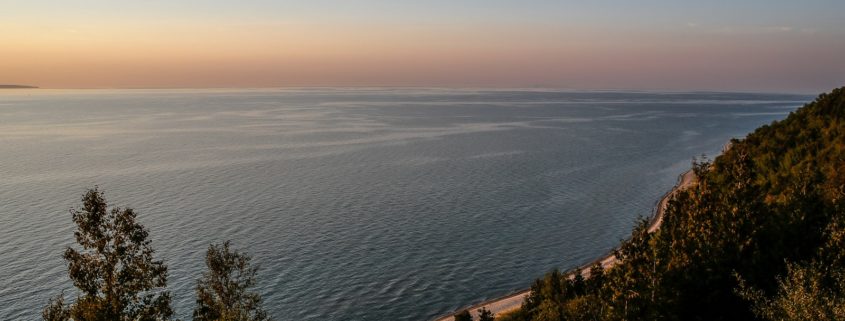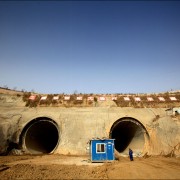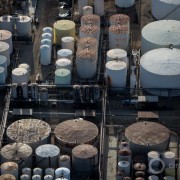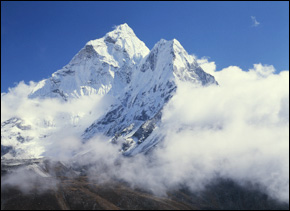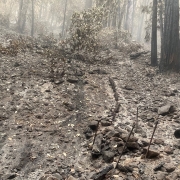Record Heat in 2016 Broke Lake Temperature Records Too
Warming lake waters worsen pollution, harm ecosystems.
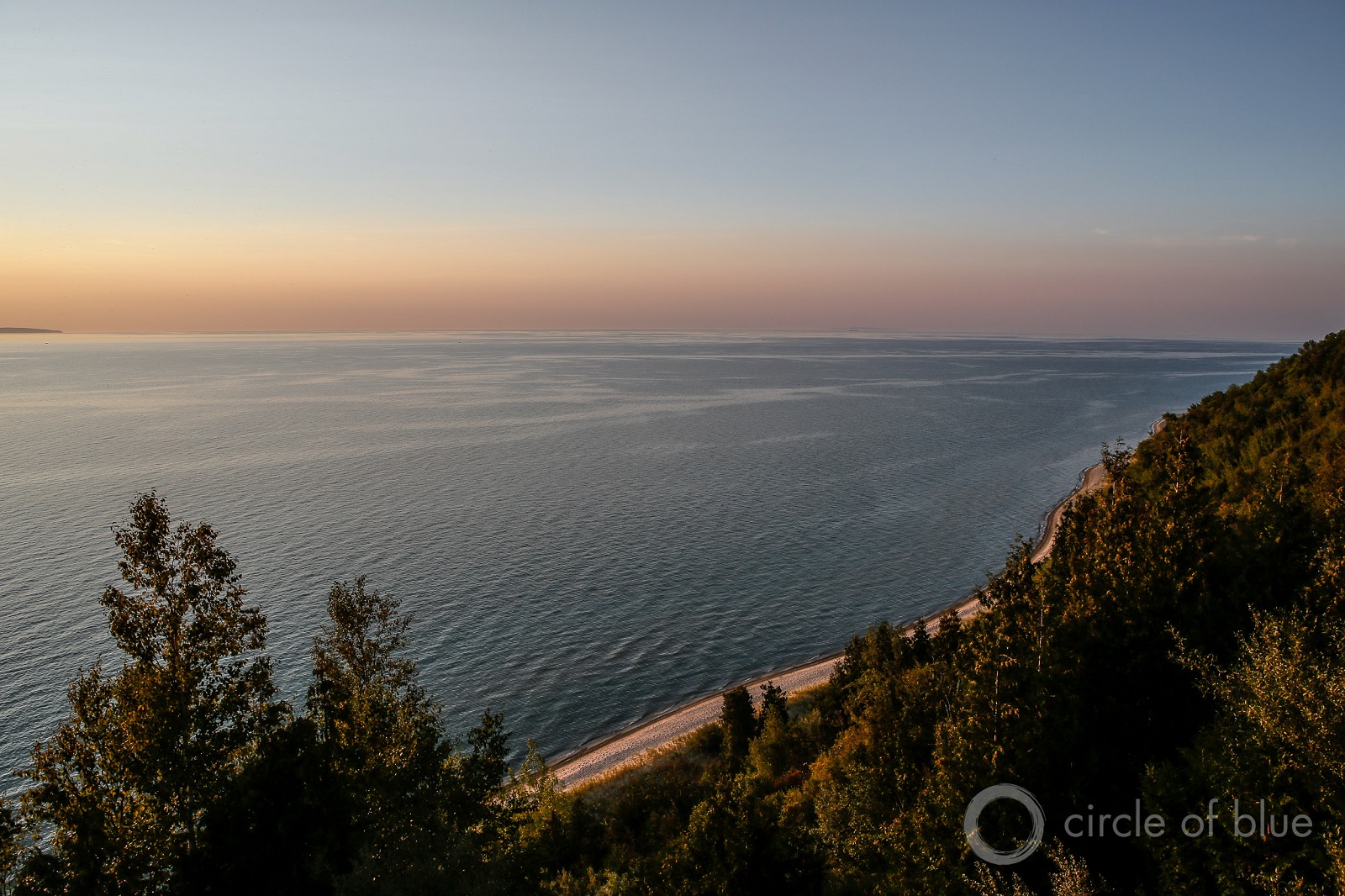
The North American Great Lakes, including Lake Michigan, pictured above, were roughly two degrees Celsius warmer in 2016 compared to the 1996-to-2015 period. Lakes are warming globally, with negative consequences for water quality, fisheries, tourism, and recreation. Photo © J. Carl Ganter / Circle of Blue
By Brett Walton, Circle of Blue
An annual analysis of the planet’s climate reaffirms what researchers knew was the case: that 2016 was the hottest year since at least 1880, when reliable global measurements were first kept. Record concentrations of heat-trapping gases and a strong El Nino raised the global average temperature to a new high, breaking a mark set just a year earlier.
The atmosphere is not only the place with incremental warming: the world’s freshwater lakes are also heating up. Average lake temperatures in 2016 were the highest in the 21-year scientific record. The report identified a decade-long pattern of warming that is most pronounced in the Northern Hemisphere, especially in Europe.
“If this trend continues, local economies dependent on lakes for drinking water, agricultural irrigation, recreation, and tourism are likely to be increasingly affected,” the report states.
Warming lake waters are most damaging when combined with other factors. Heat plus nutrients such as nitrogen and phosphorus, which flow from farm fields and wastewater treatment facilities, results in algal blooms that kill fish, poison drinking water, and turn a lovely canoeing spot into a fetid blight.
The trouble extends downward through the water column. When lake surfaces warm faster than the depths, it prevents the waters from mixing, explained Geoff Schladow, a University of California, Davis, professor and a contributing author to the report. This stratification inhibits the transfer of oxygen to deeper waters, which, in turn, can result in fish kills and the release of heavy metals and nutrients from sediment.
In addition to warming, lakes are also shrinking, due to decreased rainfall and increases in water withdrawals and evaporation. From Lake Urmia in Iran to highland lakes in the Andes, water bodies across the planet are under increasing stress.
The climate assessment, published in the Bulletin of the American Meteorological Society, was led by researchers at the National Oceanic and Atmospheric Administration. More than 450 scientists from 60 countries contributed to the peer-reviewed report.
For the lakes analysis, satellite temperature records for 681 lakes were compared to the 1996-to-2015 average. Researchers used summer surface temperatures, meaning to a depth of 20 centimeters (eight inches), because some of the lakes freeze in the winter.
Schladow was not sure why European lakes show such a strong warming signal but he noted that there is a strong correlation between air temperatures and water temperatures.
On-site monitoring provided ground truth for a few dozen lakes. Russia’s Lake Baikal, the world’s largest and deepest lake, was 2.3 degrees Celsius warmer than normal last year while the North American Great Lakes were roughly two degrees Celsius above the 20-year average.
Brett writes about agriculture, energy, infrastructure, and the politics and economics of water in the United States. He also writes the Federal Water Tap, Circle of Blue’s weekly digest of U.S. government water news. He is the winner of two Society of Environmental Journalists reporting awards, one of the top honors in American environmental journalism: first place for explanatory reporting for a series on septic system pollution in the United States(2016) and third place for beat reporting in a small market (2014). He received the Sierra Club’s Distinguished Service Award in 2018. Brett lives in Seattle, where he hikes the mountains and bakes pies. Contact Brett Walton

